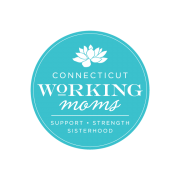
Post Written by Dena Fleno for CTWorkingMoms.com
Despite all of my attempts at brainwashing teaching my children that this time of year is about the Season of Giving, most importantly of ourselves, there are still lists that are made and the expectations of Santa’s bounty to arrive December 25th.
It is no secret that I am always concerned about what toxins are in our everyday products, and Christmas gifts (even the ones from Santa’s Toy Shop) are no exception to my scrutiny.
Before my days as the “crazy chemical lady,” I figured that most things sold for use by children are tested for safety in all areas. As long as I steered clear of cheaply made Dollar Store finds I could sleep at night knowing that my kids were not being exposed to hazards such as lead, cadmium, and other carcinogenic materials.
I was wrong.
Last week, the U.S. Public Interest Research Group (PIRG) released their 27th Annual survey of toy Safety, Trouble In Toyland. It is a good resource for guidelines in buying toys for children and highlights some of the offenders (like a Dora the Explorer Backpack) currently on the shelves as what one would consider high-end, or, at the very least, reputable stores.
Even with all of my knowledge about the industry and their attempts to get away with things until someone finds out, it still takes me aback when I find out that there are still so many hazards in our kids toys. While there have been some major victories in making our kids products safer (BPA-free in CT, and the passage of the Consumer Product Safety Improvement Act (CPSIA) strengthened the Consumer Product Safety Commission’s (CPSC) ability to regulate and require testing of children’s products), there is still a long way to go and organizations like PIRG are helping to shed light on where the industry and the regulators fall short.
Some of the surveys findings are as follows:
- Lead continues to be a hazard in toys: We have all heard about the hazards fo lead and children. The current federal legal lead standard is 100 parts per million (ppm), though the American Academy of Pediatrics recommends a lead limit of 40 ppm. One toy in the survey, a toy called a Morphobot at the Dollar Tree was found to have 180 ppm lead, and many others were found to be in the 40- 100 ppm range. Cadmium is now the replacement ingredient for lead and has similar effects on developing children (brain development delays, bone weakness, and kidney problems if ingested). After the CPSC threatened to make mandatory rules on the use of cadmium, the industry instituted “voluntary standards” to only sell products that contain less than 30 ppm cadmium in them. however, the CPSC has no authority to enforce voluntary standards.
- Phthalates: We have talked about Phthalates before. The CPSIA banned several types of phthalates (DEHP, DBP and BBP) in levels greater than 1000 ppm, and an interim DINP, DIDP and DNOP in any children’s toys and articles. While non of the products that were tested exceeded the federal guidelines some did exceed certain state guidelines for mandatory reporting of products that contain phthalates.
- Magnets and other Choking Hazards: The survey found some toys to have mislabeled or obscured warnings for choking hazards for children 3 and under. Also many toys contain very strong magnets that if swallowed in multiples can cause severe intestinal issues if they were to attract each other in your child’s innards.
So what is a well-meaning mom or Santa to do?
- Try to avoid plastics: if you can’t look for safer versions with the numbers 1,2,4 or 5 labeled on the bottom of the product.
- Buy products made of natural materials like wood: Melissa and Doug always have great wooden versions of plastic toys that will last a whole lot longer and give you more bang for you buck. Look for unpainted toys unless they are certified to be lead-free and non-toxic.
- Watch the bling: Cheap kids jewelry is notorious for containing lead and cadmium. Steer clear especially of the dollar store types. Instead, take a trip to the craft store and show your kids how to make friendship bracelets, or use wooden beads and bangles.
- Always be your own CPSC: A lot of times we need to use our own common sense about what is safe and not, and recognize that some things do slip through the cracks. A good way to test for choking hazards s to use a paper towel or toilet paper roll to determine if something can be considered a choking hazard.
Happy Shopping!
CTWorkingMoms is group of 24 working moms from diverse backgrounds who write about the journey of juggling both motherhood and a career. We keep it real and cover everything from workplace rules, to special needs to what it's REALLY like to be a working mom -- the good, bad and ugly. Our website is more than just another mom blog -- it is an essential resource for parents trying to navigate the work/life balance. Check us out at ctworkingmoms.com and on Facebook!



The views and opinions expressed in this post are those of the author(s) and do not necessarily reflect those of MomsRising.org.
MomsRising.org strongly encourages our readers to post comments in response to blog posts. We value diversity of opinions and perspectives. Our goals for this space are to be educational, thought-provoking, and respectful. So we actively moderate comments and we reserve the right to edit or remove comments that undermine these goals. Thanks!